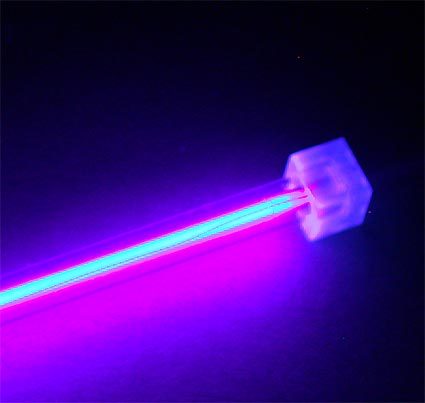Mobo Tsunami! 24 Boards with the 865/875P Chipset
Conclusion: Purchase Decision Not Dependent On Chipset, Continued
On the other hand, the dual DDR memory interface with 200 MHz (DDR400) is now already exhausted. In numerous boards, the voltage of the memory is already increased at the factory (at least 2.6 Volts, instead of 2.5) to guarantee decent signal quality and, consequently, stable operation. It is therefore clear that new, higher frequencies of 266 MHz (DDR533) can only be achieved in combination with a new design and DDR-II. In addition, our tests show that the operation of four one-sided DDR400 modules with maximum timing is not possible. This problem could possibly be remedied by two double-sized memory modules.
As new BIOS software is available at regular intervals, you should perform updates at your leisure via Windows XP and the Internet. Fiddling around with a DOS boot diskette and flash tool is absolutely out. The result is defective boot-ups - and what's the percentage of users who still know the DOS commands? If you want to stick to the conventional methods, then integrating the flash tool into the BIOS is the better choice.
An important issue is the noise generated by the system: this is minimized by an intelligent fan control. Out of all the test candidates, QDI has the best available solution, i.e., the CPU fan is switched off if the CPU load is too low. On the other hand, Elitegroup dispenses with a controller and allows the fan to work at a constantly high speed. Although Asus has integrated a similar control, it has turned out to be virtually useless. Aopen adopts a different strategy and measures the noise level by a microphone - the noise level being used as the input size of the control.
Why the standard equipment for an 875P motherboard does not include a Gigabit LAN via a CSA connection is a mystery to us. Without a CSA connection, the data flow of the network (PCI) places stress on the bus between the Southbridge and Northbridge, which is already limited anyway. Asus, Aopen and Epox (with wide-ranging equipment), for example, dispense with CSA connections and rely on cheap PCI chips instead. Asus even goes one step further: the meager pack of features for the board is no giveaway - a full set of features and identical performance is available from the competition for the same price.
Serial-ATA is currently on everyone's minds. The appropriate cables are provided, in addition to the connections and RAID functions on the boards. How about an optional bundle with two hard disks from the hard disk manufacturers? The user could save a bit of money at the same time and change to RAID-0. And where are the long overdue drives, such as CD/DVD recorders, that are now available for less than $30?
The often tiny labeling of connections without color-coding also deserves criticism. This essentially applies to the power LED and button, hard disk LED, reset button and speaker connection. Are users meant to crawl under the table with a flashlight and magnifying glass, with the danger of cutting their hands?
At this point, we want to touch on the question of cost-effectiveness, which is a crucial argument for many end customers when making a purchase. Asus' P4C800 Deluxe and Intel's 875PBZ cost $200 (both with 875P chipset), and Elitegroup's PF1 costs $160 are; in our view, these companies should reconsider their pricing policies. On the other hand, Gigabyte's GA-8KNXP (875P) for $210 and MSI's Neo 2 (865PE) for approximately $170 are model candidates.
Get Tom's Hardware's best news and in-depth reviews, straight to your inbox.
Current page: Conclusion: Purchase Decision Not Dependent On Chipset, Continued
Prev Page Conclusion: Purchase Decision Not Dependent On Chipset Next Page Awards: Gigabyte GA-8KNXP (Intel 875P) And MSI Neo 2 (Intel 865PE)-
nezhawolter Great post you shared, education is essential for every individual. Anyone can reach success by the education. of course there are lot of difficulties in studying with frequent exams and assignment work. For assignment help you can go through the law essay writing service.Reply
